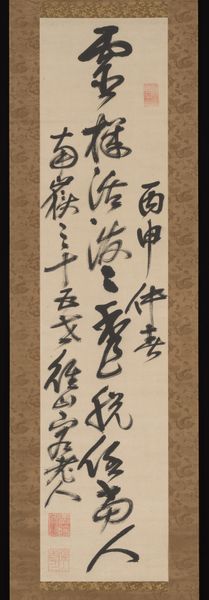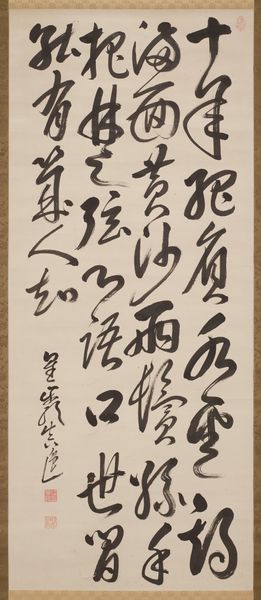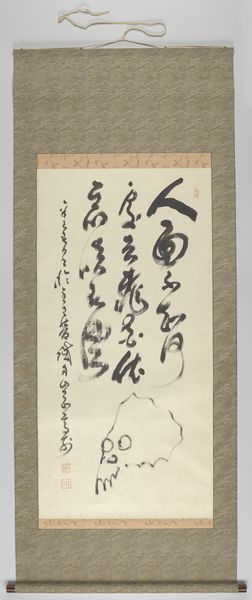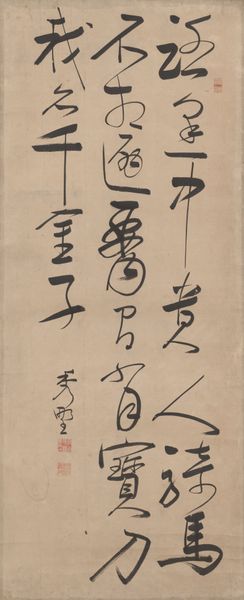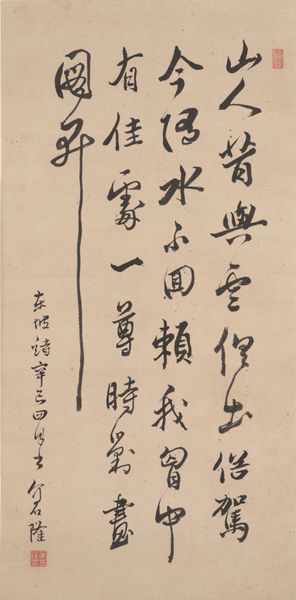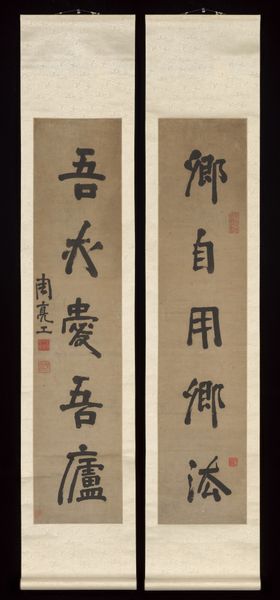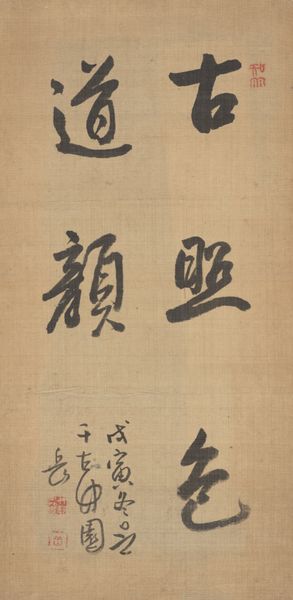
Couplet from Song Zhiwen’s poem “Ascending the Pavilion at the Monastery of Meditative Concentration” 1368 - 1644
0:00
0:00
drawing, paper, ink
#
drawing
#
ink paper printed
#
asian-art
#
text art
#
paper
#
22_ming-dynasty-1368-1644
#
ink
#
orientalism
#
china
#
calligraphy
Dimensions: Image: 134 3/4 x 39 1/8 in. (342.3 x 99.4 cm) Overall: 186 3/4 x 48 in. (474.3 x 121.9 cm) Overall with knobs: 186 3/4 x 53 3/4 in. (474.3 x 136.5 cm)
Copyright: Public Domain
Editor: So, this scroll presents a couplet from Song Zhiwen’s poem, "Ascending the Pavilion at the Monastery of Meditative Concentration.” It’s rendered in ink on paper by Mi Wanzhong during the Ming Dynasty. I'm immediately struck by how the vertical composition and the flowing script seem to invite a contemplative reading. What are your initial thoughts? Curator: It immediately evokes the concept of shared cultural memory, doesn’t it? Calligraphy, particularly in the East, is never just about words. It’s the symbolic manifestation of thought and emotion, passed down through generations. Editor: How so? Curator: Well, consider the context. It’s a couplet chosen from a poem about ascending to a meditative space, likely within a Buddhist monastery. Think about the act of ascending itself—a visual symbol across cultures representing spiritual striving and enlightenment. Editor: That’s interesting. So, the choice of poem isn't arbitrary? Curator: Precisely. Mi Wanzhong, through his brushstrokes, is not simply replicating the text, he's imbuing it with layers of meaning accessible to those familiar with both the literary tradition and the spiritual connotations of the imagery. The brushstrokes themselves mirror a meditative practice, the ink's darkness a representation of the depth of contemplation. What feelings do you associate with that darkness? Editor: Perhaps introspection, a journey inward. Are the particular characters used significant as well? Curator: Undoubtably. Characters, like any visual symbol, can accumulate meanings over time. Depending on the style of calligraphy employed, each stroke weight and spatial relation might convey the artist's mood and underlying emotion that is triggered by such poetry and art form. Editor: So, the work acts almost like a visual mnemonic device, triggering cultural and spiritual associations. Curator: Exactly! It's about unlocking the collective unconscious encoded within the visual. I believe it is more relevant today, in our noisy world, than it was ever before. Editor: That definitely changes how I see it; I'll remember to appreciate calligraphy not just for its visual beauty, but for its ability to invoke history and cultural memory.
Comments
No comments
Be the first to comment and join the conversation on the ultimate creative platform.
